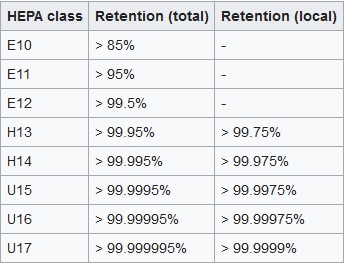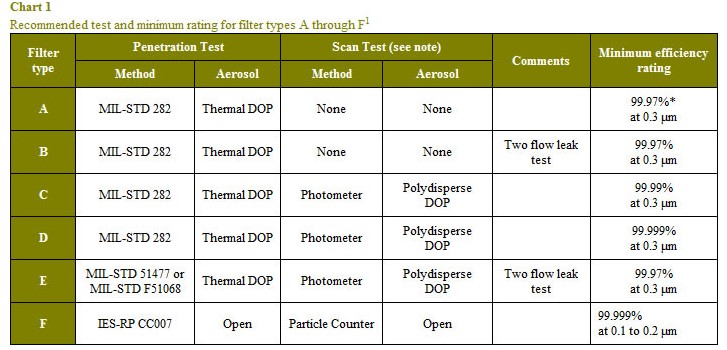Hi all. We’ve just published an air purifier buying guide, and have a product review in the pipeline - look for that in early 2020.
Hi Chris, if possible in the review, it would be good to see a test of the accuracy of the PM2.5 display, which many models have. I just popped my newly purchased Breville unit on the veranda for a few minutes and was surprised that the air quality was shown as fair (AQI ~60-80), when there is quite a bit of smoke around, although it is an order of magnitude improved on what it was earlier today.
But then, perhaps my perception of what fair quality air is like has been influenced by decades of living in a rural area, free from air pollution most of the time 
That’s great Chris.
Per my prior posts it would be interesting to compare how well some of the spit system aircons fitted with optional air purifying filters perform. It may be a low cost alternative for those of us with suitable systems already installed?
Or the option of forced air systems which prefilter the air before it is pushed into a house or room making for a supposedly zero dust outcomes.
And if the air purifiers efficiently remove smaller fractions. One would expect say a PM2.5 to remove 99.9%+ PM 2.5 and above sized fraction.
Air purifier reviews are now up (member content).
Wow!
You don’t always get what you pay for.
Hope Choice can expand on this review as more models become available for testing.

I was going to buy a dyson fan/heater/purifier but now I’m not so sure.
My main worry is smoke given that when I was in school smokey conditions would put me out of action for a week. But at the same time that’s such a small part of the year to spend $700 on a device only designed to purify. Where as a dyson would replace both my fan and heater (and probably do a better job than both).
Anyone have any thoughts on this?
If you are a member of CHOICE you can log into the Purifiers review and see where the Dysons ended up regarding their performance. I can’t say how they rated here but I can say that $ cost of these is huge and you would want to make sure you were getting value for money for those $s spent. If you aren’t a member of CHOICE then the small cost of membership even if only for a short period I think will be money very well spent.
Then after you have selected an air purifier that you like, you if needed, can buy some cheaper but effective fans and heaters at reasonable prices. Again on the fan and heater front you can while a member check the reviews and see where the Dysons sit as regards performance:
I think you will be surprised at some of the bargains (if you haven’t seen these reviews before) to be had outside of using a Dyson and paying those prices.
At the moment it may be a small smokey period but what will happen as conditions change, I think buying for effective relief should be more important than how long the period lasts. It only takes one bad asthma attack to cost you more than making sure the product works the way it should.
Yeah I guess it’s a question though of because it’s quiet mild for me, do I need a top of the range device (the best scoring air purifier is about the same price as the Dyson fan/heater when it goes on sale). As for fan/heater performance, the dyson is slightly better than my existing fan and far better than my heater. If the dyson scored 50% for purifying, does that mean it removed 50% of the particles? Is that enough to help?
Hi Gordon,
Thank you for pointing this out. I’m from Ionmax and I’ve investigated this and it is, in fact, a misprint on our part. The actual test report for the unit shows 230-240V/50Hz as the power rating. I’m working on correcting our materials at the moment. Rest assured, there won’t be an issue with warranty when it comes to connecting to the incorrect power source. We’ve sold this unit for years without any issue.
Please feel free to contact us should you require any further clarification.
Welcome to the Choice Community Forum Viv. Thanks for clarifying the details on the power supply requirements.
In the end I went for a higher capacity purifier, but clearly Appliances Online were concerned enough to immediately remove it from their listing of available models.
No worries Gordon. Appliances Online might have removed it because this model is sold out at the moment, both with them and with us.
Glad to hear you’ve found another air purifier! Stay safe from the haze and Happy Holidays everyone!
If it was achieving 50% (I can’t say if it did or didn’t just talking in general terms here as the results are Member only content) then it was only 50% effective I would believe ie not very effective. I guess any removal would help but would it be enough to relieve your symptoms?
If you are buying something to be a fan and a heater and it came with an added benefit of some purifying that is an added bonus but if you really did need much “cleaner air” and you were buying a product to do that, would a result of only 50% be a wise spend of your money even if only used for short periods of the year. To be true HEPA the filtering needs to remove 99.97% of particulates and 50% isn’t good enough.
I’ve read that there are plenty of pretend HEPA filters on the market in cheap purifiers. I think the final percentage of a given size particle that is removed is dependent on a number of factors. How fine the filter is- below a certain size minimal particles will be removed due to the pore size of the filter. Time- the longer you run it the more complete the entire room volume filtration will be. Volume, the more cubic metres per hour the purifier passes through its filters, the faster it will get down to its final percentage of particles removed.
I think that the main effect of clogged filters is that the air flow is greatly reduced, so filtration takes much longer, with performance rapidly deteriorating as the filter approaches maximum clog.
Purifiers which detect and warn (or prevent operation) when the filter is just about full is useful function, especially useful for those dependent on very clean air. Having a spare filter on hand could be a good idea too, although they are quite expensive.
There are various levels of HEPA filtering but even if the filter itself is the defined HEPA level ( HEPA filters, as defined by the United States Department of Energy (DOE) standard adopted by most American industries, remove at least 99.97% of airborne particles 0.3 micrometers (μm) in diameter) there can be leakage/passage of air around the filter such that the filter is rendered almost useless.
EU levels of defining HEPA, as you can see can be at >85% efficiency and still can be labelled HEPA and not until it reaches H14 class does it meet the US stated standard for what some call “True HEPA”. Second chart is US filter grades to meet HEPA.

Found this link in a new facebook group on air quality
In other parts of the world ripping the securely fastened guard off the front of a fan and strapping a filter panel in it’s place might seem like a great solution. It’s worth considering whether the makeshift front is as good as the original guard at keeping little fingers etc safe, or as well secured as the original. I’d imagine a suitable length of high density foam rubber between the fan housing and filter panel might be an option that enables the original guard to be retained. Legally who knows?
As a more general note:
Bladed (axial flow fans) can only develop low pressures. This may explain the comments of some that the experiment seems to block airflow from the fan. Or reduce the airflow until it is barely noticeable.
The fan motor may rely on air flow past the electric motor to help with cooling. I’d wonder if there is not a real risk of the motor overheating or potentially catching fire, due to stalled airflow.
There appears to be a hidden advert within the link for the promoters business. Is this a clever idea to deliver a safe and reliable solution or self promotion?
Retail products that perform the same function typically use a barrel fan or sometimes a centrifugal fan (same principal). These deliver airflow with adequate pressure to overcome filter resistance and may include blocked filter/low airflow protection/warnings. To get usable higher pressure airflow out of an axial flow type fan (EG pedestal, ceiling etc) an enclosed turbine like blade design is required. Similar to a vacuum cleaner with a very high speed motor.
Perhaps scope for some alternate design ideas, although any mains powered experiments might need an electrical license to complete? And then there is the cost of an expensive meter to prove the performance!
As Mark mentions above, there is a real issue with motor overheating, as most fans rely on air cooling of the motor. Cut the flow by a factor of 5 or 10, or maybe more? and you may be introducing your own PM 2.5, along with other nasty smells as the motor burns out!
Whilst they claim it is effective, if the air flow is drastically reduced, the volume of air that is able to be cleaned may well be too small to be useful. The claim (not surprising since a HEPA filter is used!) that it works is all well and good, but the usefulness in a room of any reasonable size is dubious.
Also, I’m pretty sure that operating a certified for use in Australia after removing the grill would be illegal.
Sometimes you lot make me sorry I post things. I found it interesting. I was not suggesting anyone actually do it. Jeez.
@SueW. Please keep posting. It was interesting.
There were a number of user posts/comments following on from the Facebook link questioning the effectiveness of the solution. It encouraged some more critical thinking. The solution appears to have some risks attached. It is not intended as a criticism of your view. We all observe things differently.
Apologies,
Hope you enjoy your Xmas.
Mark
